GL Enhances Rx Interface Emulation in MAPS™ Diameter
Welcome to another November 2016 issue of GL Communications' Newsletter providing information and insight into our MAPS™ Diameter Protocol Emulator - enhanced with support for additional procedures and TLS transport method over Rx interface.
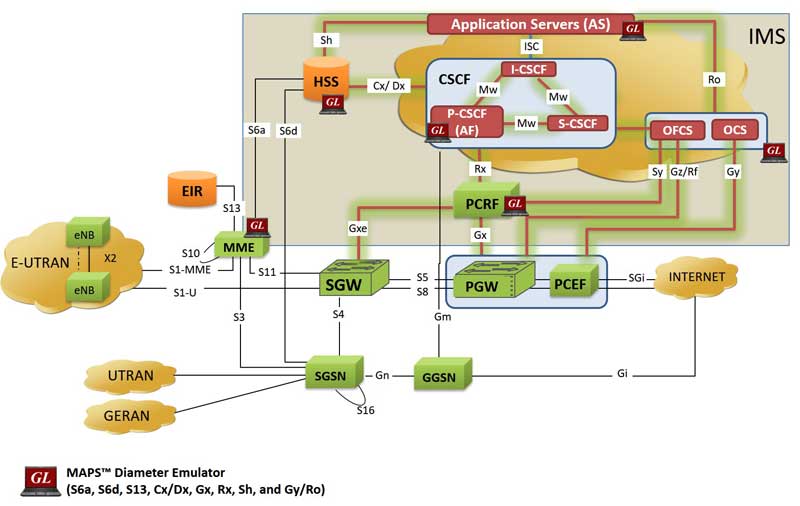
Overview
The Diameter protocol has been chosen as the Authentication, Authorization and Accounting (AAA) protocol in all next generation fixed and mobile IP based networks (IMS, LTE). The AAA protocols are used to determine whether the user can connect to the network (Authentication) and use a particular service (Authorization). It is also used to track network resources used by end-user for accurate billing (Accounting). The Diameter protocol is a considerably more sophisticated protocol for mobility management, policy and charging (online and offline) control. It is designed to support data, services, and applications with extreme flexibility and is expected to replace all legacy protocols such as MAP, LDAP, Radius, and others.
The Rx interface allows for dynamic QoS and charging-related service information to be exchanged between the PCRF and the AF. This information is used by the PCRF for the control of service data flows and IP bearer resources.
MAPS™ Diameter can simulate PCRF & P-CSCF (AF) network elements to test Rx interface functionalities as per 3GPP standards. It is enhanced to support almost all procedures over Rx interfaces:
- AA-Request/Answer, Re-Auth-Request/Answer, Abort-Session-Request/Answer
- Session-Termination-Request/Answer
- Subscription to Notification of Signaling Path Status
- Access Network Charging Information Notification
- Reporting Access Network Information
- Provisioning of AF Signaling Flow Information
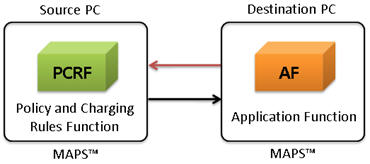
MAPS™ Diameter as PCRF/AF in Rx Interface
A typical call flow over Rx interface is depicted in the figure below. The figure illustrates the Authentication Authorization (AA) procedure in Diameter Rx interface and Gx interface:
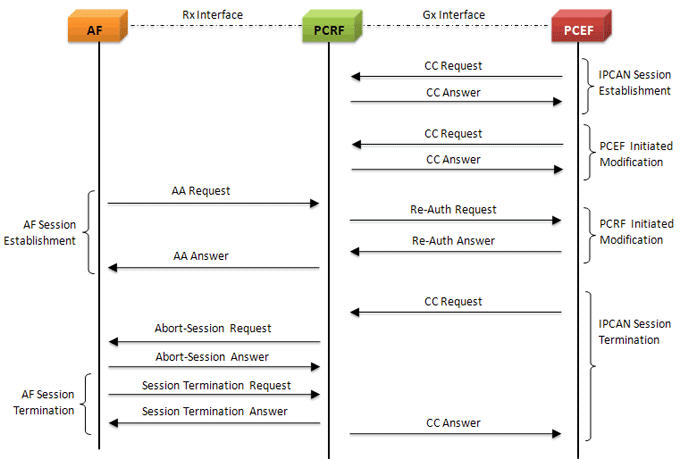
MAPS™ Diameter also supports other Diameter interfaces such as S6a, S6d, S13, Cx/Dx, Gx, Sh, Gy, and Ro interfaces. The simulation of other interfaces (Rf, Dh, Gq, Zh, Zn, Wa, Wd, Wx, Wm, Wg, Pr) and elements will also be supported in near future.
MAPS™ supports an End-to-End 4G LTE Communications Network Lab with all components to simulate both E-UTRAN, EPC (Evolved Packet Core) and IMS, allowing complete testing of the LTE-IMS network.
Supported Protocol Standards
MAPS™ Diameter emulator complies with the following protocol standards.
| Supported Protocols | Standard / Specification Used | |
|---|---|---|
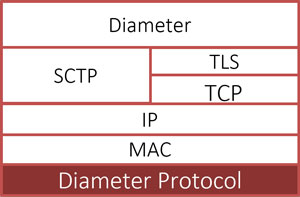 MAPS™ Diameter over SCTP/TCP/TLS Protocol Stack |
Diameter | Rx - 3GGP TS 29.214-e10 |
| SCTP |
RFC 4960 |
|
TCP |
RFC 793 |
|
TLS |
RFC 5246 |
Rx Interfaces - Supported Procedures
Initial Provisioning of Session Information:
A new AF session is being established and media information for this AF session is available at the AF and the related media require PCC supervision, the AF shall open a Rx Diameter session with the PCRF.
Modification of Session Information:
The AF may modify the session information at any time (e.g. due to an AF session modification or internal AF trigger) by sending an AA-Request command to the PCRF containing the Media-Component-Description AVP(s) with the updated Service Information.
AF Session Termination:
AF can terminate the session by sending Session-Termination-Request command. AF can terminate the session only, if the AF had received a successful AA-Answer for the initial AA-Request.
Subscription to Notification of Signaling Path Status:
An AF may subscribe to notifications of the status of the AF Signaling transmission path. To do so, the AF shall send AA-Request command with Specific-Action AVP requesting the subscription to "INDICATION_OF_LOSS_OF BEARER" and/or "INDICATION_OF_RELEASE_OF_BEARER".
IP-CAN Session Termination:
When an IP-CAN session is terminated, the PCRF shall inform the AF about the IP-CAN session termination by sending an ASR (abort session request) command to the AF on each active Rx Diameter session.
IP-CAN type change Notification:
AF has successfully subscribed to notifications for change in UE’s IP-CAN type and RAT type, the PCRF shall provide the UE’s IP-CAN type and RAT type information in the AA-Answer if the PCRF Knows already. Otherwise the PCRF shall send an RAR command when the UE’s IP-CAN type or RAT type changes.
Access Network Charging Information Notification:
AF has subscribed to a notification about Access Network Charging Information; the PCRF shall provide the Access Network Charging Information in AA-Answer, if PCRF knows already. If not, the PCRF shall provide the Access Network Charging Information by sending a Re-Authorization-Request (RAR) command when the Access Network Charging Information is received from the PCEF.
Reporting Access Network Information:
If AF wants to request the PCRF to report the access network information, the AF shall set Specific-Action AVP to the "ACCESS_NETWORK_INFO_REPORT" within the and shall include the required access network information within the Required-Access-Info AVP in AA-Request Command.
Provisioning of AF Signaling Flow Information:
An AF may provision information about the AF signaling IP flows between the UE and the AF. To do so AF may use existing AF session or it may open new AF session with Flow-Usage AVP set to the value "AF_SIGNALING", the Flow-Status AVP set to "ENABLED".
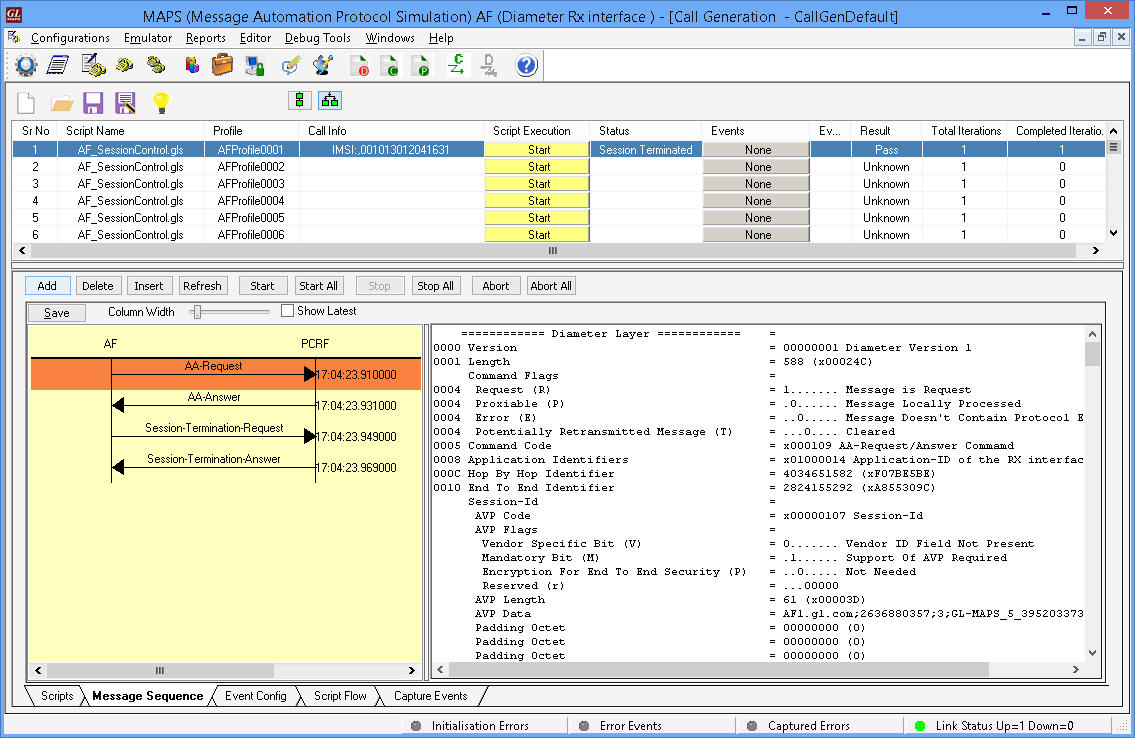
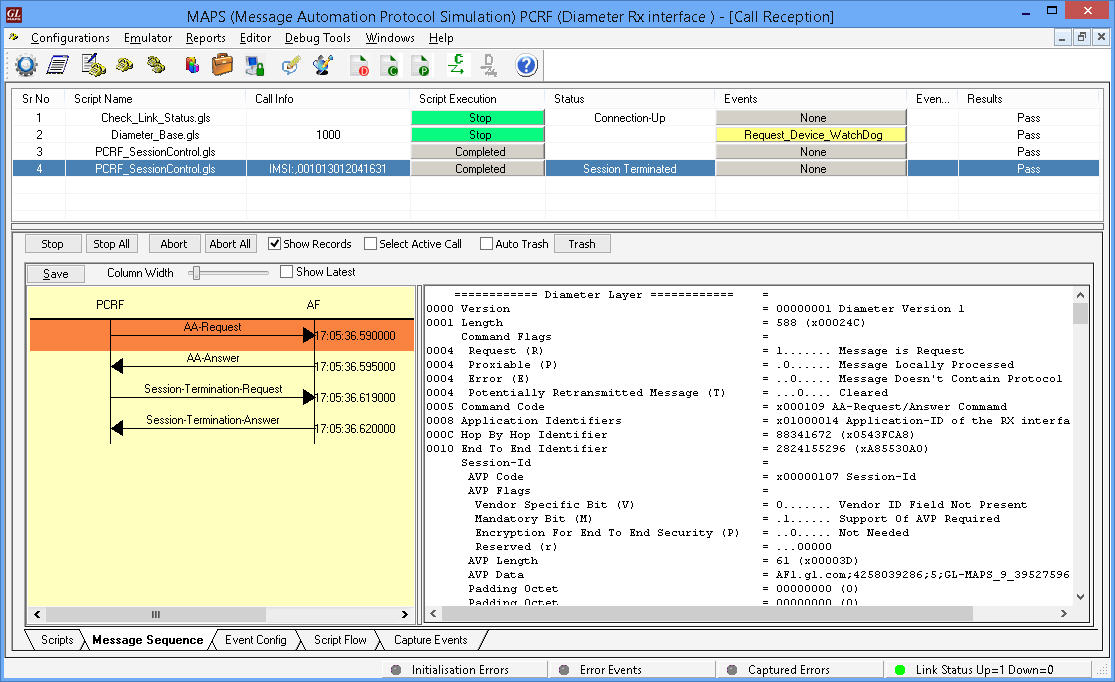
 Back to Newsletter Index Page
Back to Newsletter Index Page